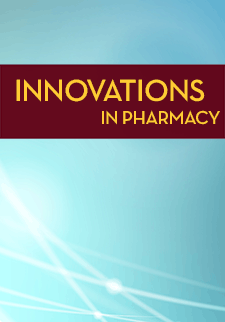Assessing Pharmacists' Attitudes and Barriers Involved with Immunizations
Sarah Aldrich
Donald Sullivan
DOI: https://doi.org/10.24926/iip.v5i2.336
Keywords: immunizations, vaccines, pharmacy practice, pharmacists
Abstract
Pharmacists are considered the most accessible health care professional. Immunizations create an opportunity for the profession to grow and develop toward direct patient care. Between 1995 and 2004 programs involving immunizations led to a national initiative to train pharmacists that became a significant leap toward pharmacist's involvement in direct patient care. Although immunizations can be considered a catalyst to change the pharmacist's role, little was known about pharmacist's attitudes and the barriers involved with immunizing. Few studies have assessed barriers, attitudes, and practice issues experienced by immunizing pharmacists. The objective of this study was to determine pharmacists' attitudes toward immunizations and more specifically to assess possible barriers involved with this practice. Five hundred pharmacists were randomly selected for inclusion in the study from the State of Ohio Board of Pharmacy Database, of which 137 (27.4%) completed the survey. A 37- item questionnaire was administered via an e-mail invitation to take an online survey using Qualtrics software with a Likert-type scale, where 1 = strongly disagree and 7 = strongly agree. Several topics were assessed regarding immunizations including time constraints, workflow constraints, adequacy of training, technician support, worksite conditions and space, immunization processes, reimbursement issues, safety issues, documentation issues, and the future direction of immunizations. Demographics included gender, age, degree, number of years practicing, practice site, and number of years immunizing. Seventy-three percent of pharmacists believed that immunizing could lead to prescription filling errors (mean=4.45, SD=1.79). Pharmacists strongly agreed that having more technicians on staff would make providing immunizations easier (mean=5.80, SD=1.39) and that they play a vital role in keeping the process running smoothly (mean=6.08, SD=1.16). Also, pharmacists strongly agreed that they would feel more comfortable providing immunizations with another pharmacist on duty (mean=5.77, SD=1.39). Currently, less than ten percent of patients complete the immunization paperwork in advance; pharmacists strongly agreed that having patients complete the paperwork ahead of time would make the process more efficient (mean=5.76, SD=1.20). Pharmacists agreed that they feel adequately trained on their pharmacy's emergency protocol if patients were to have an adverse reaction to an immunization (mean=5.17, SD=1.60) although, seventy-three percent are only comfortable immunizing patients sixteen years and older. Most pharmacists agreed that they felt comfortable allowing interns to give immunizations under supervision (mean=5.23, SD=1.79). Pharmacists agreed that they should be able to provide the measles (mean=5.04, SD=2.07) and Tdap (mean=5.31, SD=2.00) vaccinations. Finally, most pharmacists agreed that the best way to compensate immunizing pharmacists was through a performance-based bonus. Pharmacist's attitudes toward immunizations are generally positive, however, more technician help and overlap of pharmacists would greatly benefit the immunization process.
Type: Student Project


